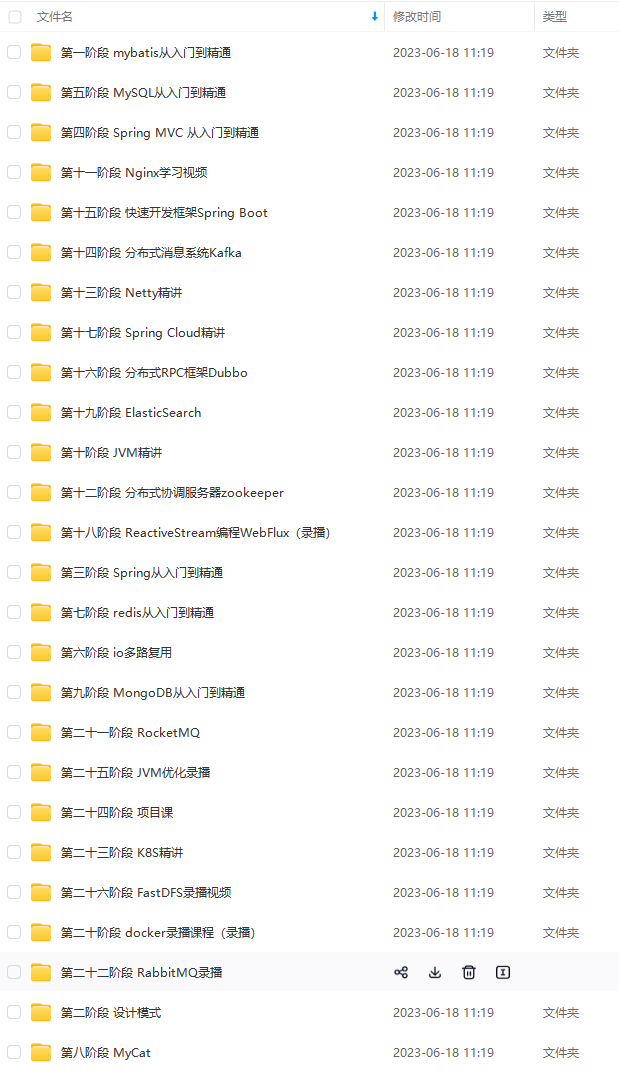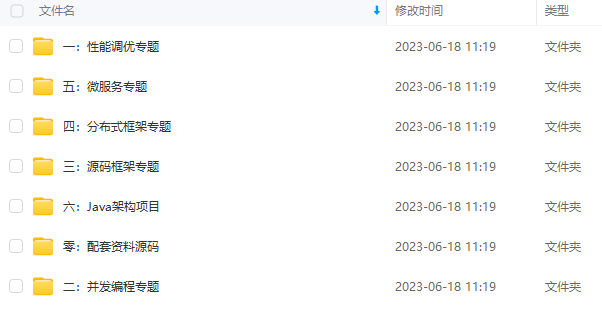import java.lang.annotation.Target;
/**
- 数据类型使用Demo
*/
@Target(ElementType.TYPE)
@Retention(RetentionPolicy.RUNTIME)
@interface Reference{
boolean next() default false;
}
public @interface AnnotationElementDemo {
//枚举类型
enum Status {FIXED,NORMAL};
//声明枚举
Status status() default Status.FIXED;
//布尔类型
boolean showSupport() default false;
//String类型
String name()default “”;
//class类型
Class<?> testCase() default Void.class;
//注解嵌套
Reference reference() default @Reference(next=true);
//数组类型
long[] value();
}
3、编译器对默认值的限制
编译器对元素的默认值有些过分挑剔。
首先,元素不能有不确定的值。也就是说,元素必须要么具有默认值,要么在使用注解时提供元素的值。其次,对于非基本类型的元素,无论是在源代码中声明,还是在注解接口中定义默认值,都不能以null作为值,这就是限制,没有什么利用可言,但造成一个元素的存在或缺失状态,因为每个注解的声明中,所有的元素都存在,并且都具有相应的值,为了绕开这个限制,只能定义一些特殊的值,例如空字符串或负数,表示某个元素不存在。
4、注解不支持继承
注解是不支持继承的,因此不能使用关键字extends来继承某个@interface,但注解在编译后,编译器会自动继承java.lang.annotation.Annotation接口,这里我们反编译前面定义的DBTable注解。
package com.uncle.annotationdemo;
import java.lang.annotation.Annotation;
//反编译后的代码
public interface DBTable extends Annotation
{
public abstract String name();
}
虽然反编译后发现DBTable注解继承了Annotation接口,请记住,即使Java的接口可以实现多继承,但定义注解时依然无法使用extends关键字继承@interface。
5、快捷方式
所谓的快捷方式就是注解中定义了名为value的元素,并且在使用该注解时,如果该元素是唯一需要赋值的一个元素,那么此时无需使用key=value的语法,而只需在括号内给出value元素所需的值即可。这可以应用于任何合法类型的元素,记住,这限制了元素名必须为value,简单案例如下
import java.lang.annotation.ElementType;
import java.lang.annotation.Retention;
import java.lang.annotation.RetentionPolicy;
import java.lang.annotation.Target;
//定义注解
@Target(ElementType.FIELD)
@Retention(RetentionPolicy.RUNTIME)
@interface IntegerVaule{
int value() default 0;
String name() default “”;
}
//使用注解
public class QuicklyWay {
//当只想给value赋值时,可以使用以下快捷方式
@IntegerVaule(20)
public int age;
//当name也需要赋值时必须采用key=value的方式赋值
@IntegerVaule(value = 10000,name = “MONEY”)
public int money;
}
6、Java内置注解与其它元注解
接着看看Java提供的内置注解,主要有3个,如下:
@Override:用于标明此方法覆盖了父类的方法,源码如下
@Target(ElementType.METHOD)
@Retention(RetentionPolicy.SOURCE)
public @interface Override {
}
@Deprecated:用于标明已经过时的方法或类,源码如下,关于@Documented稍后分析:
@Documented
@Retention(RetentionPolicy.RUNTIME)
@Target(value={CONSTRUCTOR, FIELD, LOCAL_VARIABLE, METHOD, PACKAGE, PARAMETER, TYPE})
public @interface Deprecated {
}
@SuppressWarnnings:用于有选择的关闭编译器对类、方法、成员变量、变量初始化的警告,其实现源码如下:
@Target({TYPE, FIELD, METHOD, PARAMETER, CONSTRUCTOR, LOCAL_VARIABLE})
@Retention(RetentionPolicy.SOURCE)
public @interface SuppressWarnings {
String[] value();
}
其内部有一个String数组,主要接收值如下:
deprecation:使用了不赞成使用的类或方法时的警告;
unchecked:执行了未检查的转换时的警告,例如当使用集合时没有用泛型
(Generics) 来指定集合保存的类型;
fallthrough:当 Switch 程序块直接通往下一种情况而没有 Break时的警告;
path:在类路径、源文件路径等中有不存在的路径时的警告; serial:当在可序列化的类上缺少
serialVersionUID 定义时的警告;
finally:任何 finally 子句不能正常完成时的警告;
all:关于以上所有情况的警告。
这个三个注解比较简单,看个简单案例即可:
//注明该类已过时,不建议使用
@Deprecated
class A{
public void A(){ }
//注明该方法已过时,不建议使用
@Deprecated()
public void B(){ }
}
class B extends A{
@Override //标明覆盖父类A的A方法
public void A() {
super.A();
}
//去掉检测警告
@SuppressWarnings({“uncheck”,“deprecation”})
public void C(){ }
//去掉检测警告
@SuppressWarnings(“uncheck”)
public void D(){ }
}
前面我们分析了两种元注解,@Target和@Retention,除了这两种元注解,Java还提供了另外两种元注解,@Documented和@Inherited,下面分别介绍:
@Documented 被修饰的注解会生成到javadoc中
@Documented
@Target(ElementType.TYPE)
@Retention(RetentionPolicy.RUNTIME)
public @interface DocumentA {
}
//没有使用@Documented
@Target(ElementType.TYPE)
@Retention(RetentionPolicy.RUNTIME)
public @interface DocumentB {
}
//使用注解
@DocumentA
@DocumentB
public class DocumentDemo {
public void A(){
}
}
可以发现使用@Documented元注解定义的注解(@DocumentA)将会生成到javadoc中,而@DocumentB则没有在doc文档中出现,这就是元注解@Documented的作用。
@Inherited 可以让注解被继承,但这并不是真的继承,只是通过使用@Inherited,可以让子类Class对象使用getAnnotations()获取父类被@Inherited修饰的注解,如下:
@Inherited
@Documented
@Target(ElementType.TYPE)
@Retention(RetentionPolicy.RUNTIME)
public @interface DocumentA {
}
@Target(ElementType.TYPE)
@Retention(RetentionPolicy.RUNTIME)
public @interface DocumentB {
}
@DocumentA
class A{ }
class B extends A{ }
@DocumentB
class C{ }
class D extends C{ }
//测试
public class DocumentDemo {
public static void main(String… args){
A instanceA=new B();
System.out.println(“已使用的@Inherited注解:”+Arrays.toString(instanceA.getClass().getAnnotations()));
C instanceC = new D();
System.out.println(“没有使用的@Inherited注解:”+Arrays.toString(instanceC.getClass().getAnnotations()));
}
/**
- 运行结果:
已使用的@Inherited注解:[@com.zejian.annotationdemo.DocumentA()]
没有使用的@Inherited注解:[]
*/
}
前面经过反编译后,我们知道Java所有注解都继承了Annotation接口,也就是说 Java使用Annotation接口代表注解元素,该接口是所有Annotation类型的父接口。同时为了运行时能准确获取到注解的相关信息,Java在java.lang.reflect 反射包下新增了AnnotatedElement接口,它主要用于表示目前正在 VM 中运行的程序中已使用注解的元素,通过该接口提供的方法可以利用反射技术地读取注解的信息,如反射包的Constructor类、Field类、Method类、Package类和Class类都实现了AnnotatedElement接口,它简要含义如下:
-
Class:类的Class对象定义
-
Constructor:代表类的构造器定义
-
Field:代表类的成员变量定义
-
Method:代表类的方法定义
-
Package:代表类的包定义
下面是AnnotatedElement中相关的API方法,以上5个类都实现以下的方法
| 返回值 | 方法名称 | 说明 |
| — | — | — |
| | getAnnotation(Class annotationClass) | 该元素如果存在指定类型的注解,则返回这些注解,否则返回 null。 |
| Annotation[] | getAnnotations() | 返回此元素上存在的所有注解,包括从父类继承的 |
| boolean | isAnnotationPresent(Class<? extends Annotation> annotationClass) | 如果指定类型的注解存在于此元素上,则返回 true,否则返回 false。 |
| Annotation[] | getDeclaredAnnotations() | 返回直接存在于此元素上的所有注解,注意,不包括父类的注解,调用者可以随意修改返回的数组;这不会对其他调用者返回的数组产生任何影响,没有则返回长度为0的数组 |
简单案例演示如下:
import java.lang.annotation.Annotation;
import java.util.Arrays;
/**
-
Created by zejian on 2017/5/20.
-
Blog : http://blog.csdn.net/javazejian [原文地址,请尊重原创]
*/
@DocumentA
class A{ }
//继承了A类
@DocumentB
public class DocumentDemo extends A{
public static void main(String… args){
Class<?> clazz = DocumentDemo.class;
//根据指定注解类型获取该注解
DocumentA documentA=clazz.getAnnotation(DocumentA.class);
System.out.println(“A:”+documentA);
//获取该元素上的所有注解,包含从父类继承
Annotation[] an= clazz.getAnnotations();
System.out.println(“an:”+ Arrays.toString(an));
//获取该元素上的所有注解,但不包含继承!
Annotation[] an2=clazz.getDeclaredAnnotations();
System.out.println(“an2:”+ Arrays.toString(an2));
//判断注解DocumentA是否在该元素上
boolean b=clazz.isAnnotationPresent(DocumentA.class);
System.out.println(“b:”+b);
/**
- 执行结果:
A:@com.zejian.annotationdemo.DocumentA()
an:[@com.zejian.annotationdemo.DocumentA(), @com.zejian.annotationdemo.DocumentB()]
an2:@com.zejian.annotationdemo.DocumentB()
b:true
*/
}
}
了解完注解与反射的相关API后,现在通过一个实例来演示利用运行时注解来组装数据库SQL的构建语句的过程
/**
- 表注解
*/
@Target(ElementType.TYPE)//只能应用于类上
@Retention(RetentionPolicy.RUNTIME)//保存到运行时
public @interface DBTable {
String name() default “”;
}
/**
- 注解Integer类型的字段
*/
@Target(ElementType.FIELD)
@Retention(RetentionPolicy.RUNTIME)
public @interface SQLInteger {
//该字段对应数据库表列名
String name() default “”;
//嵌套注解
Constraints constraint() default @Constraints;
}
/**
- 注解String类型的字段
*/
@Target(ElementType.FIELD)
@Retention(RetentionPolicy.RUNTIME)
public @interface SQLString {
//对应数据库表的列名
String name() default “”;
//列类型分配的长度,如varchar(30)的30
int value() default 0;
Constraints constraint() default @Constraints;
}
/**
- 约束注解
*/
@Target(ElementType.FIELD)//只能应用在字段上
@Retention(RetentionPolicy.RUNTIME)
public @interface Constraints {
//判断是否作为主键约束
boolean primaryKey() default false;
//判断是否允许为null
boolean allowNull() default false;
//判断是否唯一
boolean unique() default false;
}
/**
- 数据库表Member对应实例类bean
*/
@DBTable(name = “MEMBER”)
public class Member {
//主键ID
@SQLString(name = “ID”,value = 50, constraint = @Constraints(primaryKey = true))
private String id;
@SQLString(name = “NAME” , value = 30)
private String name;
@SQLInteger(name = “AGE”)
private int age;
@SQLString(name = “DESCRIPTION” ,value = 150 , constraint = @Constraints(allowNull = true))
private String description;//个人描述
//省略set get…
}
上述定义4个注解,分别是@DBTable(用于类上)、@Constraints(用于字段上)、 @SQLString(用于字段上)、@SQLString(用于字段上)并在Member类中使用这些注解,这些注解的作用的是用于帮助注解处理器生成创建数据库表MEMBER的构建语句,在这里有点需要注意的是,我们使用了嵌套注解@Constraints,该注解主要用于判断字段是否为null或者字段是否唯一。必须清楚认识到上述提供的注解生命周期必须为@Retention(RetentionPolicy.RUNTIME),即运行时,这样才可以使用反射机制获取其信息。有了上述注解和使用,剩余的就是编写上述的注解处理器了,前面我们聊了很多注解,其处理器要么是Java自身已提供、要么是框架已提供的,我们自己都没有涉及到注解处理器的编写,但上述定义处理SQL的注解,其处理器必须由我们自己编写了,如下
import java.lang.annotation.Annotation;
import java.lang.reflect.Field;
import java.util.ArrayList;
import java.util.List;
/**
- 运行时注解处理器,构造表创建语句
*/
public class TableCreator {
public static String createTableSql(String className) throws ClassNotFoundException {
Class<?> cl = Class.forName(className);
DBTable dbTable = cl.getAnnotation(DBTable.class);
//如果没有表注解,直接返回
if(dbTable == null) {
System.out.println(
"No DBTable annotations in class " + className);
return null;
}
String tableName = dbTable.name();
// If the name is empty, use the Class name:
if(tableName.length() < 1)
tableName = cl.getName().toUpperCase();
List columnDefs = new ArrayList();
//通过Class类API获取到所有成员字段
for(Field field : cl.getDeclaredFields()) {
String columnName = null;
//获取字段上的注解
Annotation[] anns = field.getDeclaredAnnotations();
if(anns.length < 1)
continue; // Not a db table column
//判断注解类型
if(anns[0] instanceof SQLInteger) {
SQLInteger sInt = (SQLInteger) anns[0];
//获取字段对应列名称,如果没有就是使用字段名称替代
if(sInt.name().length() < 1)
columnName = field.getName().toUpperCase();
else
columnName = sInt.name();
//构建语句
columnDefs.add(columnName + " INT" +
getConstraints(sInt.constraint()));
}
//判断String类型
if(anns[0] instanceof SQLString) {
SQLString sString = (SQLString) anns[0];
// Use field name if name not specified.
if(sString.name().length() < 1)
columnName = field.getName().toUpperCase();
else
columnName = sString.name();
columnDefs.add(columnName + " VARCHAR(" +
sString.value() + “)” +
getConstraints(sString.constraint()));
}
}
//数据库表构建语句
StringBuilder createCommand = new StringBuilder(
"CREATE TABLE " + tableName + “(”);
for(String columnDef : columnDefs)
createCommand.append("\n " + columnDef + “,”);
// Remove trailing comma
String tableCreate = createCommand.substring(
0, createCommand.length() - 1) + “);”;
return tableCreate;
}
/**
-
判断该字段是否有其他约束
-
@param con
-
@return
*/
private static String getConstraints(Constraints con) {
String constraints = “”;
if(!con.allowNull())
constraints += " NOT NULL";
if(con.primaryKey())
constraints += " PRIMARY KEY";
if(con.unique())
constraints += " UNIQUE";
return constraints;
}
public static void main(String[] args) throws Exception {
String[] arg={“com.zejian.annotationdemo.Member”};
for(String className : arg) {
System.out.println("Table Creation SQL for " +
className + " is :\n" + createTableSql(className));
}
/**
- 输出结果:
Table Creation SQL for com.zejian.annotationdemo.Member is :
CREATE TABLE MEMBER(
ID VARCHAR(50) NOT NULL PRIMARY KEY,
NAME VARCHAR(30) NOT NULL,
AGE INT NOT NULL,
DESCRIPTION VARCHAR(150)
);
*/
}
}
如果对反射比较熟悉的同学,上述代码就相对简单了,我们通过传递Member的全路径后通过Class.forName()方法获取到Member的class对象,然后利用Class对象中的方法获取所有成员字段Field,最后利用field.getDeclaredAnnotations()遍历每个Field上的注解再通过注解的类型判断来构建建表的SQL语句。这便是利用注解结合反射来构建SQL语句的简单的处理器模型,是否已回想起Hibernate?
1、元注解@Repeatable
元注解@Repeatable是JDK1.8新加入的,它表示在同一个位置重复相同的注解。在没有该注解前,一般是无法在同一个类型上使用相同的注解的
//Java8前无法这样使用
@FilterPath(“/web/update”)
@FilterPath(“/web/add”)
public class A {}
Java8前如果是想实现类似的功能,我们需要在定义@FilterPath注解时定义一个数组元素接收多个值如下
@Target(ElementType.TYPE)
@Retention(RetentionPolicy.RUNTIME)
public @interface FilterPath {
String [] value();
}
//使用
@FilterPath({“/update”,“/add”})
public class A { }
但在Java8新增了@Repeatable注解后就可以采用如下的方式定义并使用了
import java.lang.annotation.*;
//使用Java8新增@Repeatable原注解
@Target({ElementType.TYPE,ElementType.FIELD,ElementType.METHOD})
@Retention(RetentionPolicy.RUNTIME)
@Repeatable(FilterPaths.class)//参数指明接收的注解class
public @interface FilterPath {
String value();
}
@Target(ElementType.TYPE)
@Retention(RetentionPolicy.RUNTIME)
@interface FilterPaths {
FilterPath[] value();
}
//使用案例
@FilterPath(“/web/update”)
@FilterPath(“/web/add”)
@FilterPath(“/web/delete”)
class AA{ }
我们可以简单理解为通过使用@Repeatable后,将使用@FilterPaths注解作为接收同一个类型上重复注解的容器,而每个@FilterPath则负责保存指定的路径串。为了处理上述的新增注解,Java8还在AnnotatedElement接口新增了getDeclaredAnnotationsByType() 和 getAnnotationsByType()两个方法并在接口给出了默认实现,在指定@Repeatable的注解时,可以通过这两个方法获取到注解相关信息。但请注意,旧版API中的getDeclaredAnnotation()和 getAnnotation()是不对@Repeatable注解的处理的(除非该注解没有在同一个声明上重复出现)。注意getDeclaredAnnotationsByType方法获取到的注解不包括父类,其实当 getAnnotationsByType()方法调用时,其内部先执行了getDeclaredAnnotationsByType方法,只有当前类不存在指定注解时,getAnnotationsByType()才会继续从其父类寻找,但请注意如果@FilterPath和@FilterPaths没有使用了@Inherited的话,仍然无法获取。下面通过代码来演示:
//使用Java8新增@Repeatable原注解
@Target({ElementType.TYPE,ElementType.FIELD,ElementType.METHOD})
@Retention(RetentionPolicy.RUNTIME)
@Repeatable(FilterPaths.class)
public @interface FilterPath {
String value();
}
@Target(ElementType.TYPE)
@Retention(RetentionPolicy.RUNTIME)
@interface FilterPaths {
FilterPath[] value();
}
@FilterPath(“/web/list”)
class CC { }
//使用案例
@FilterPath(“/web/update”)
@FilterPath(“/web/add”)
@FilterPath(“/web/delete”)
class AA extends CC{
public static void main(String[] args) {
Class<?> clazz = AA.class;
//通过getAnnotationsByType方法获取所有重复注解
FilterPath[] annotationsByType = clazz.getAnnotationsByType(FilterPath.class);
FilterPath[] annotationsByType2 = clazz.getDeclaredAnnotationsByType(FilterPath.class);
if (annotationsByType != null) {
for (FilterPath filter : annotationsByType) {
System.out.println(“1:”+filter.value());
}
}
System.out.println(“-----------------”);
if (annotationsByType2 != null) {
for (FilterPath filter : annotationsByType2) {
System.out.println(“2:”+filter.value());
}
}
System.out.println(“使用getAnnotation的结果:”+clazz.getAnnotation(FilterPath.class));
/**
- 执行结果(当前类拥有该注解FilterPath,则不会从CC父类寻找)
1:/web/update
1:/web/add
1:/web/delete
2:/web/update
2:/web/add
2:/web/delete
使用getAnnotation的结果:null
*/
}
}
从执行结果来看如果当前类拥有该注解@FilterPath,则getAnnotationsByType方法不会从CC父类寻找,下面看看另外一种情况,即AA类上没有@FilterPath注解
//使用Java8新增@Repeatable原注解
自我介绍一下,小编13年上海交大毕业,曾经在小公司待过,也去过华为、OPPO等大厂,18年进入阿里一直到现在。
深知大多数Java工程师,想要提升技能,往往是自己摸索成长或者是报班学习,但对于培训机构动则几千的学费,着实压力不小。自己不成体系的自学效果低效又漫长,而且极易碰到天花板技术停滞不前!
因此收集整理了一份《2024年Java开发全套学习资料》,初衷也很简单,就是希望能够帮助到想自学提升又不知道该从何学起的朋友,同时减轻大家的负担。


既有适合小白学习的零基础资料,也有适合3年以上经验的小伙伴深入学习提升的进阶课程,基本涵盖了95%以上Java开发知识点,真正体系化!
由于文件比较大,这里只是将部分目录截图出来,每个节点里面都包含大厂面经、学习笔记、源码讲义、实战项目、讲解视频,并且会持续更新!
如果你觉得这些内容对你有帮助,可以扫码获取!!(备注Java获取)

面试结束复盘查漏补缺
每次面试都是检验自己知识与技术实力的一次机会,面试结束后建议大家及时总结复盘,查漏补缺,然后有针对性地进行学习,既能提高下一场面试的成功概率,还能增加自己的技术知识栈储备,可谓是一举两得。
以下最新总结的阿里P6资深Java必考题范围和答案,包含最全MySQL、Redis、Java并发编程等等面试题和答案,用于参考~
重要的事说三遍,关注+关注+关注!


更多笔记分享

《互联网大厂面试真题解析、进阶开发核心学习笔记、全套讲解视频、实战项目源码讲义》点击传送门即可获取!
}
从执行结果来看如果当前类拥有该注解@FilterPath,则getAnnotationsByType方法不会从CC父类寻找,下面看看另外一种情况,即AA类上没有@FilterPath注解
//使用Java8新增@Repeatable原注解
自我介绍一下,小编13年上海交大毕业,曾经在小公司待过,也去过华为、OPPO等大厂,18年进入阿里一直到现在。
深知大多数Java工程师,想要提升技能,往往是自己摸索成长或者是报班学习,但对于培训机构动则几千的学费,着实压力不小。自己不成体系的自学效果低效又漫长,而且极易碰到天花板技术停滞不前!
因此收集整理了一份《2024年Java开发全套学习资料》,初衷也很简单,就是希望能够帮助到想自学提升又不知道该从何学起的朋友,同时减轻大家的负担。[外链图片转存中…(img-TIoeP80d-1713167652888)]
[外链图片转存中…(img-7yyDzDvV-1713167652889)]
[外链图片转存中…(img-zfggNBfs-1713167652889)]
既有适合小白学习的零基础资料,也有适合3年以上经验的小伙伴深入学习提升的进阶课程,基本涵盖了95%以上Java开发知识点,真正体系化!
由于文件比较大,这里只是将部分目录截图出来,每个节点里面都包含大厂面经、学习笔记、源码讲义、实战项目、讲解视频,并且会持续更新!
如果你觉得这些内容对你有帮助,可以扫码获取!!(备注Java获取)

面试结束复盘查漏补缺
每次面试都是检验自己知识与技术实力的一次机会,面试结束后建议大家及时总结复盘,查漏补缺,然后有针对性地进行学习,既能提高下一场面试的成功概率,还能增加自己的技术知识栈储备,可谓是一举两得。
以下最新总结的阿里P6资深Java必考题范围和答案,包含最全MySQL、Redis、Java并发编程等等面试题和答案,用于参考~
重要的事说三遍,关注+关注+关注!
[外链图片转存中…(img-JO0T0ha6-1713167652889)]
[外链图片转存中…(img-x0uPomyY-1713167652890)]
更多笔记分享
[外链图片转存中…(img-oOb0s85v-1713167652890)]
《互联网大厂面试真题解析、进阶开发核心学习笔记、全套讲解视频、实战项目源码讲义》点击传送门即可获取!






















 3124
3124











 被折叠的 条评论
为什么被折叠?
被折叠的 条评论
为什么被折叠?








